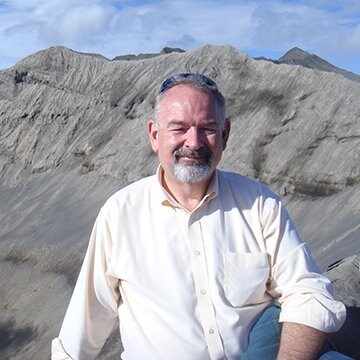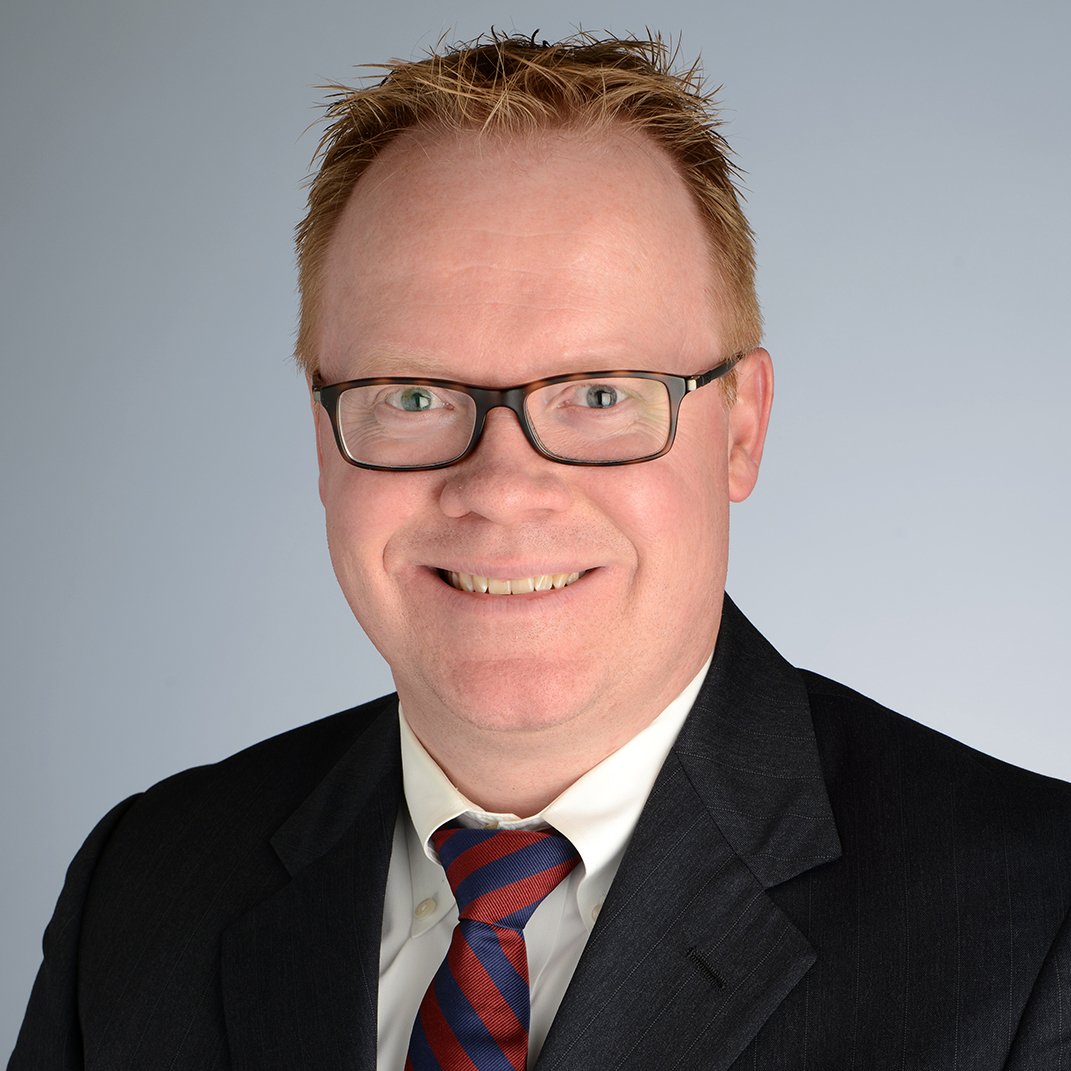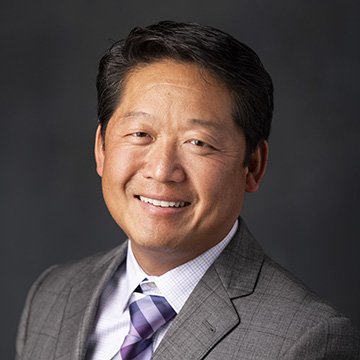Life-saving care made possible through strategic clinical relationship
Mark Algren has always had a full plate. He knows what to say and how to say it. He began teaching English in Hong Kong in 1979 and his career has taken him on a wild ride to places like Saudi Arabia and the United Arab Emirates, before landing at the University of Kansas Applied English Center and then finishing his career at the University of Missouri.
But, Algren fell in love with Lawrence, so it only made sense that he and his wife would move back after he retired. They made their way back in 2020 and due to COVID-19, they had a lot of time to reflect on their health.

Mark Algren
“My wife and I joke that when you retire, you have all the time you need with your doctor,” he said.
Time with his doctor is exactly what Algren’s body ordered. During a chat with his sister-in-law, he was reminded that his family had a history of heart issues. His father, Glenn, had suffered multiple heart issues, including an aortic aneurysm and multiple heart attacks.
“As I approached 68, I really started to think about my dad’s heart issues,” Algren said. “I did not want to take chances.”
Algren still remembers the first time he knew something was wrong with his father’s heart. During a vacation to Colorado when he was in elementary school, his father suffered a heart attack. After that, Algren worried that the next heart attack would be the one that took his father away.
“My wife said I can’t die before her,” he said. “My dad lived to be 87, and I don’t want to die prematurely.”
On the road to discovery
Algren knew that even though he did not have any symptoms of a heart issue, he did not want to have any regrets by not checking his heart. He scheduled an appointment with his primary care provider, Thomas Marcellino, MD.
“I went in with the mindset that even if nothing is wrong there is peace of mind in that,” he said.
Although Algren did not have any symptoms, Dr. Marcellino ordered an ultrasound late fall 2021 with a follow-up in October 2022 just to double check that everything was alright. That ultrasound was not able to get a clear view of the entire aorta, so Dr. Marcellino decided to schedule another one in November just to keep an eye on Algren’s heart. The second ultrasound told a different story.
“Somebody with good eye noticed something was off,” said Algren. “Something just didn’t seem right.”
It gets worse before it gets better
The second scan raised enough concerns that a CT scan was ordered. This scan revealed that Algren had a splenic artery aneurysm. A splenic artery aneurysm occurs when the artery that supplies blood to the spleen expands and leaves the diameter of the splenic artery 50% larger than it normally is. Arteries are flexible in nature, which allows for them to contract and expand as bloods flows through. The aneurysm is the result of the artery wall weakening and losing its shape. Although the likelihood of having a splenic artery aneurysm is rare, a rupture can be life-threatening.

Axel Thors, DO, FACS
Dr. Marcellino referred Algren to Axel Thors, DO, FACS, a surgeon from The University of Kansas Health System, working with Lawrence Vascular Surgery.
“I was told that mine was about five times larger than normal,” said Algren.
He was quickly scheduled for surgery in mid-December to repair the splenic artery wall.
“There are two ways you can correct a splenic artery aneurysm,” Dr. Thors said. “One is through open surgery where we remove the aneurysm by opening up the abdominal cavity, which is very invasive. The other method is endovascular therapy which is a minimally–invasive procedure.”
Using endovascular therapy would allow Dr. Thors to make a small incision to access the splenic artery using a catheter and specialized x-ray technology to place a covered stent. The stent would provide support to the walls of Algren’s splenic artery and exclude the aneurysm from blood flow.
“Dr. Thors did a great job at laying out my options,” Algren said. “He told me that I could get a stent or do nothing or if a stent wouldn’t work, then use a coil. Doing nothing was not an option, and I wanted to take care of it as soon as possible.”
Algren checked in to LMH Health for the procedure and was able to head home the next day. However, his journey was far from over. Due to the length of the splenic artery aneurysm, Dr. Thors was unable to place a stent. The next step was to use a coil.
“A coil stops the blood flow,” said Dr. Thors. “For Mark, this meant that we were cutting off the blood supply to his spleen by promoting blood clotting. This closes off the splenic artery aneurysm and eliminates the risk of it rupturing.”
Algren was scheduled for a coil placement in January 2023. The surgery was a success and he was able to head home after staying at LMH Health for two nights.
Nearing the end of the road

Ralph Park, MD
With the splenic artery no longer at risk of rupturing, the focus turned to Algren’s spleen. With the coil placement resulting in the blockage of blood flow, his spleen started to die. Dr. Thors referred Algren to Ralph Park, MD, a surgeon with Lawrence General Surgery.
“I mainly deal with diseases and pathology in the abdominal cavity,” said Dr. Park. “It was easy to take on Algren’s case since Dr. Thors has referred patients to me before.”
The spleen’s main function is to work with the immune system to produce different types of blood cells and work as a filter for damaged or old blood cells. When the spleen is cut off from the blood flow, it dies within ten days. It is important to remove the spleen within that timeframe to avoid additional pain, systemic inflammation and additional problems that result from dying tissue.
“I had my consult with Dr. Park while I was still in the hospital following my coil placement,” said Algren. “I couldn’t even say that it was a transition to another doctor’s care, because it went so smoothly.”
Dr. Park wanted to remove the spleen three days after the coil placement, but he needed to wait until a blood thinner was out of Algren’s system.
“Mark had to be off the blood thinner for seven days,” said Dr. Park. “By the time we removed the spleen on the ninth day, we could already tell that it was dying.”
Dr. Park used robotic-assisted surgery, which allowed for a faster recovery. The surgeon operates the robot from a console with high-definition 3D images with ten times the magnification of the surgical area. The robotic arms allow the surgeon to have more range, flexibility, precision and control than a human wrist. Robotic surgery typically results in less blood loss and minimizes pain in recovery, which allowed for a faster recovery. Algren stayed overnight at LMH Health before heading home with the instructions to take it easy for three weeks.
The enhanced robotic surgery is possible due to the generous gifts from community donors to the LMH Health Foundation. LMH Health is home to two da Vinci robots, with the most advanced technology to date.
“Through this entire process I knew that I had a team of people who had access to one another,” said Algren. “I knew that if it wasn’t the end, that they would be able to easily support one another and see me to the end.”
Care close to home
Dr. Thors and Lawrence Vascular Surgery are part of LMH Health’s strategic clinical relationship with The University of Kansas Health System, which is paving the way for clinical partnerships that increase patient access to specialty care in and around Douglas County. The agreement serves as a framework for the two institutions to explore collaborative endeavors that support both system’s missions, while ensuring LMH retains its independence.
“We knew that LMH Health had people coming to Lawrence to provide specialty care, so there was no reason to go to a different hospital,” said Algren. “I wanted to stay with LMH Health because it is in Lawrence and Lawrence is home.”